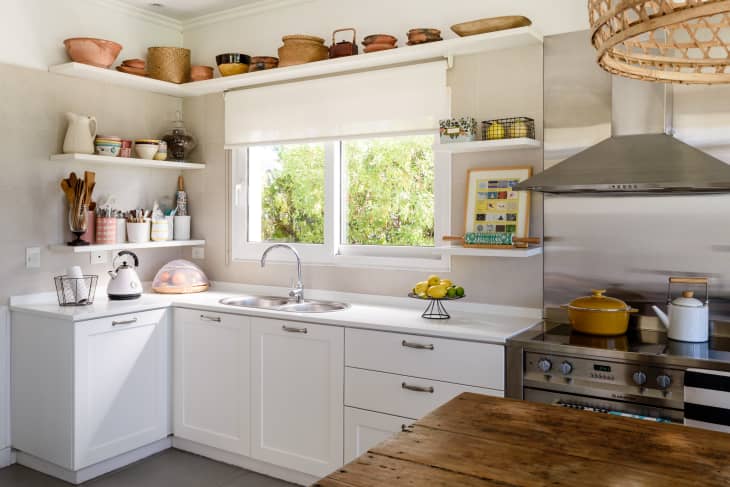Let’s Settle This: Are Single Bowl Kitchen Sinks Better Than Double Bowls?

Much like front- or top-loading washing machines or gas versus electric stoves, kitchen sinks inspire strong opinions and fierce debate — ones that transcend even the trends of the moment. People love or hate their single bowl sinks; others love or hate their double bowl sinks, too. If you’re in the position to choose, and/or you’re open to change, here are the pros and cons of each.
The most important thing to keep in mind as you’re weighing the pros and cons of each type of kitchen sink is how you work in the kitchen, particularly during food prep and cleanup. This consideration will make the various pluses and minuses of each type relevant to you, or not.
Pros of Double Bowl Kitchen Sinks
Double bowl sinks offer versatility and options in how you use your sink. The main draw is that the sections allow you to easily use the different sides for separate purposes. With a double bowl sink, you can:
- Use one side for food prep and one side for washing dishes as you go or for stashing dirty dishes until you can get to them.
- Soak dishes in one side while you wash in the other side.
- Dry clean dishes on one side while you use the other side for washing.
- Separate heavier dirty dishes from more delicate items like glassware.
- Keep one side of the sink free of dangerous contaminates like raw chicken while you’re thawing food for dinner or washing raw-meat dishes and utensils.
Cons of Double Bowl Kitchen Sinks
The following are some of the reasons people hate their double sinks and swear to opt for a single next time:
- Neither side of the sink is big enough for soaking or easily washing large dishes like cookie sheets or stock pots.
- Double sinks eat up too much counter space.
- One side of the sink never gets used, so a double sink is effectively like having one small sink.
- Only one side has a garbage disposal, and food particles get stuck in the side without a garbage disposal.
Pros of Single Bowl Sinks
Many people can’t wait to switch their current “older style” double sinks to a single sink; and many people who have a single sink love it for these reasons:
- It’s big enough to wash large pots, pans, and sheet pans.
- It’s still versatile; if you want to, say, have a section of hot, soapy water, you can put a temporary dish basin in the sink.
- The garbage disposal is situated to catch all the food debris in the sink.
- A large single sink tends to eat up less counter space, making it ideal for smaller kitchens.
Cons of Single Bowl Sinks
Individuals who are used to what they perceive as the built-in versatility of a double bowl sink loathe the limited options of a single sink. They cite as reasons against a single sink:
- You don’t have the option of separating dirty and clean dishes.
- Delicate dishes are more easily broken since they are exposed to crashes and bangs from heavy dishware in the same sink.
- You can’t separate thawing meat or dishes contaminated with raw meat juices from other dishes; if part of the sink is contaminated, the whole sink is contaminated.
- If you hand-wash dishes, you don’t have the option of “hiding” drying dishes in one side of the sink.
Which do you prefer?